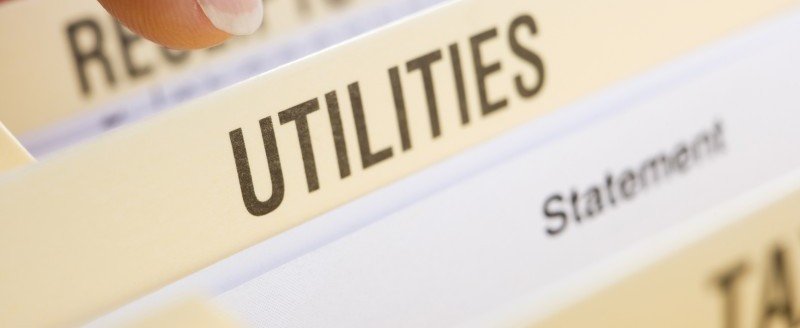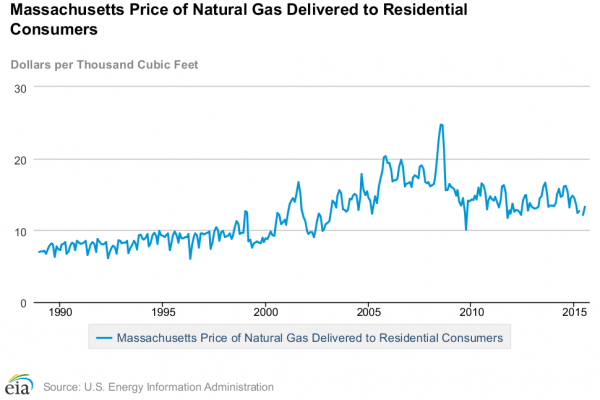Massachusetts is known for its celebrated history, rich culture, beautiful scenery, and the indomitable spirit of its residents. However, like most of New England, Massachusetts experiences significant price volatility when it comes to natural gas. There are a number of factors contributing to this scenario including extreme weather, the lack of pipeline capacity coming into the region, and an increasing dependence on natural gas for electricity generation.
Natural Gas Price Trends
Residential natural gas prices in the 1990’s were fairly stable and predictable. Other than seasonal volatility, natural gas prices exhibited a gradual but persistent upward trend toward to the $10 per thousand cubic feet (Mcf) level. Significant price volatility began in January 1999 when prices leaped to $12.50/Mcf. This began a period of huge price swings that ranged from a low of $7.55/Mcf in May 1999 to a high of $24.66/Mcf in August 2008. Massachusetts residential natural gas prices have bounced around the $15/Mcf mark since November 2009 but the seasonal swings are much greater than back in the calm waters of the 1990s.
A presentation recently released by the U.S. Energy Information Administration (EIA) identifies some of the challenges facing the New England natural gas market. On a national basis, the EIA is forecasting that natural gas prices will be lower in the winter of 2015-16 than the previous winter. They are also forecasting lower natural gas prices than last winter. These are national population-weighted forecasts, however, and one has to look at Massachusetts and New England specifically for an idea of what lies ahead for that region.
The EIA cites ongoing transportation constraints for delivering natural gas into New England as a risk to price stability. Localized price volatility could occur because of prolonged periods of very cold temperatures. Furthermore, the amount of electricity generated from natural gas has increased significantly from less than 30% in 2001 to 43% in 2014. The increased reliance on natural gas for electricity generation has compounded the pipeline constraints in the region. These constraints are more pronounced in winter months when heating usage is high.
Winter Gas Prices
When Massachusetts natural gas supplies are tight, both natural gas and electricity prices can spike, as was the case in early 2015 and during the extreme cold in 2014. The current forward pricing for electricity and natural gas for January 2016 is much lower than January 2015. However, it would only take the loss of a major power plant or a natural gas supply disruption to shock the market and increase prices. Massachusetts residential energy users can prepare for the winter by locking in both their electricity and natural gas prices for the season. Fixed rate electricity plans transfer the price risk from the customer to the electricity supplier.
The same holds true for natural gas rates. Massachusetts residential gas customers can find themselves exposed to price volatility if they are on variable rate plans during the winter. Locking in energy rates when price risk is greatest gives the customer peace of mind and protects them from market factors beyond their control.



